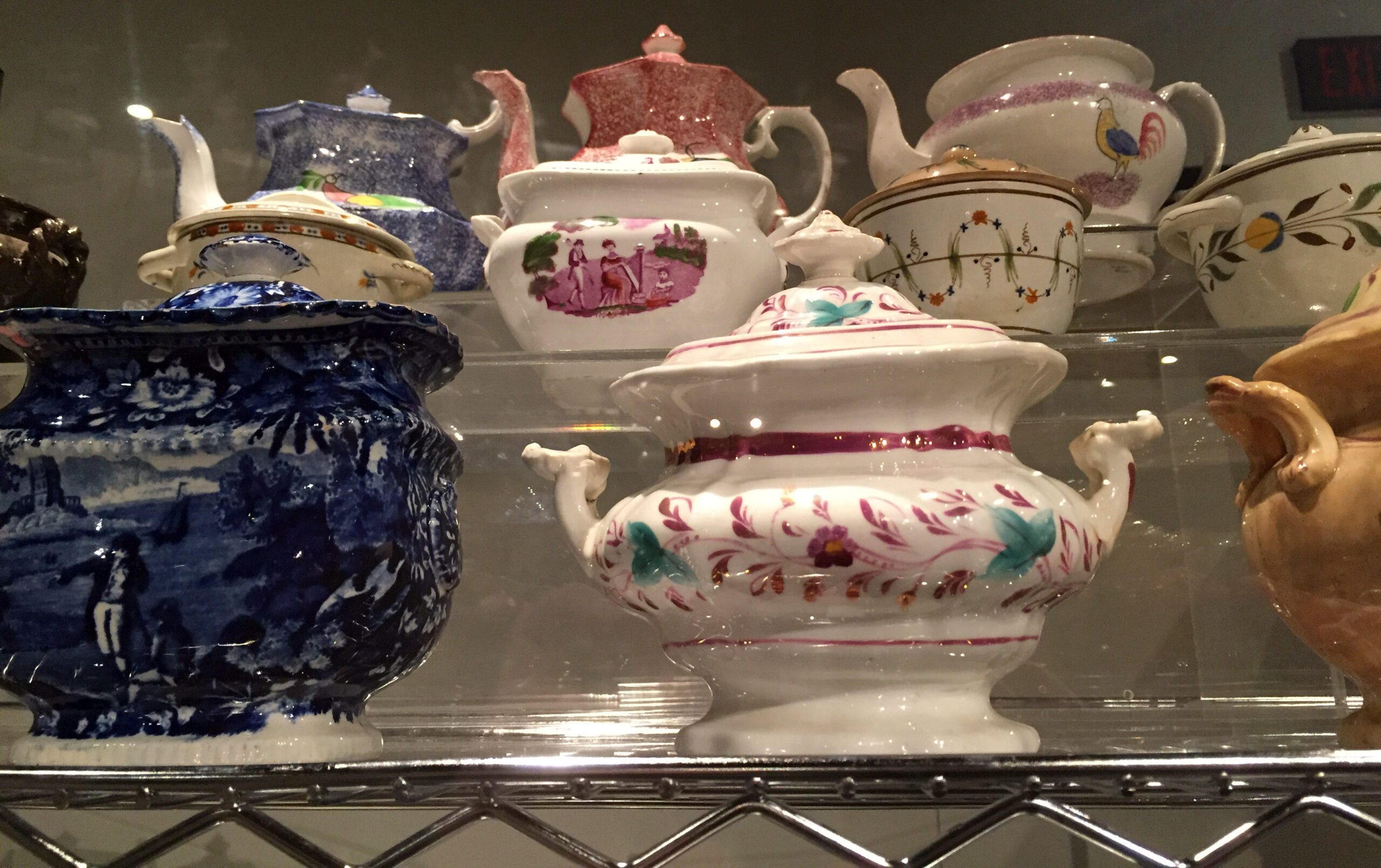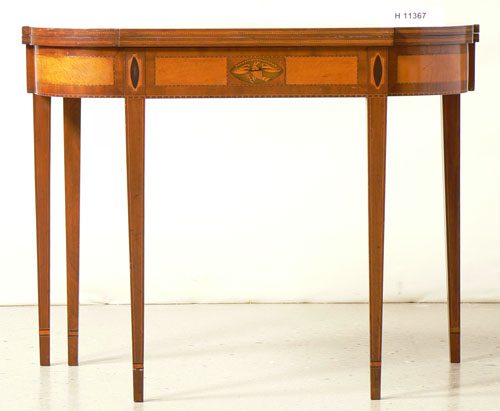The Ohio History Connection relies on the generosity of current and former Ohioans and their descendants to grow our collection of historical objects. Tom and Agnes Christopher of Greenville, Darke County, Ohio, helped our Early American Decorative Arts collection to become one of the largest ones at an Ohio history museum.
 Our relationship with Tom Christopher began in 1972 when he loaned a large collection of antique furniture, art, ceramics, and Currier & Ives prints for display at the Ohio History Center in Columbus, Ohio. The exhibit, titled “The Christopher Collection,” was described in the July 1972 edition of Echoes as “one of the finest collections of eighteenth and nineteenth century china, American furniture, and Currier and Ives prints ever assembled privately in Ohio” (“The Christopher Collection,” Echoes 11, no. 7 (July 1972): 2). Mr. Christopher later bequeathed these loaned objects to us with the intention that they be used for display and educational purposes, and they became part of the permanent collection after his death in 1977.
Our relationship with Tom Christopher began in 1972 when he loaned a large collection of antique furniture, art, ceramics, and Currier & Ives prints for display at the Ohio History Center in Columbus, Ohio. The exhibit, titled “The Christopher Collection,” was described in the July 1972 edition of Echoes as “one of the finest collections of eighteenth and nineteenth century china, American furniture, and Currier and Ives prints ever assembled privately in Ohio” (“The Christopher Collection,” Echoes 11, no. 7 (July 1972): 2). Mr. Christopher later bequeathed these loaned objects to us with the intention that they be used for display and educational purposes, and they became part of the permanent collection after his death in 1977.
Mr. Christopher and his wife, Agnes, amassed their collection over two decades by purchasing pieces at antique stores and auction houses in Ohio and New York City. The collection shows distinct styles preferences, including Queen Anne, Chippendale, Hepplewhite, and Sheraton furniture and Spatterware and Lusterware ceramics. Examples of these decorative styles are on display in Gallery 2 at the Ohio History Center in Columbus, Ohio, including an exquistite Chippendale Highboy, pictured on the right. Tall case clocks, mirrors, tables and chests of drawers populate the furniture display, while pitchers, teapots, sugar bowls, and cups and saucers collected by the Christophes fill the ceramic shelves. In total, Gallery 2 features 98 of the 1,746 objects in the Christopher Collection.

Although most of the pieces in the Christopher Collection were not made in Ohio, they represent the types of objects early Ohioans would have brought with them when they settled in the state. Through these everyday objects, we can learn more about Ohio settlers and their daily lives. For instance, a gate leg table unfolded and placed in the center of a room for a woman to use to serve tea to her friends could later be folded in half and the table stowed against a wall to make space in the center of the room for a spinning wheel. Furniture like this tells us that Ohioans had limited space in their homes, and they used rooms for multiple purposes.
Would you like to learn more about Early American Decorative Arts objects? We have many options available: you can visit the Christopher Collection in Gallery 2, attend a program at the Ohio History Center, search our online catalog, or contact curatorial staff to make arrangements to see other pieces from the collection in our storage facility. We look forward to learning with you!